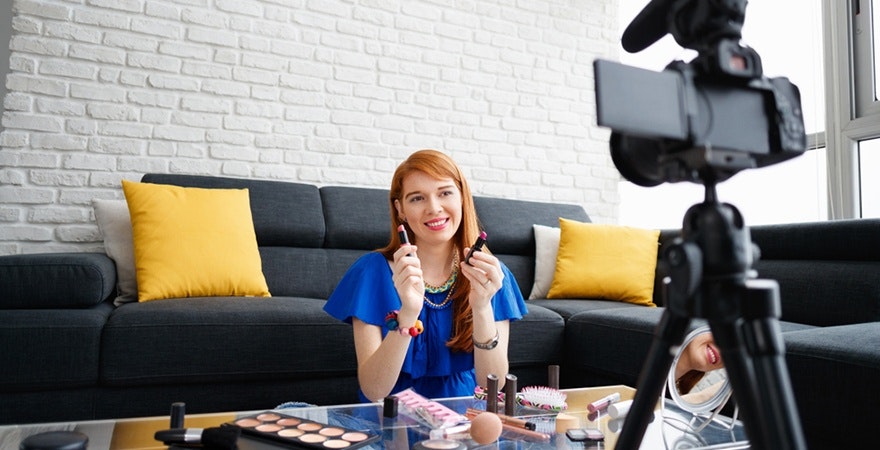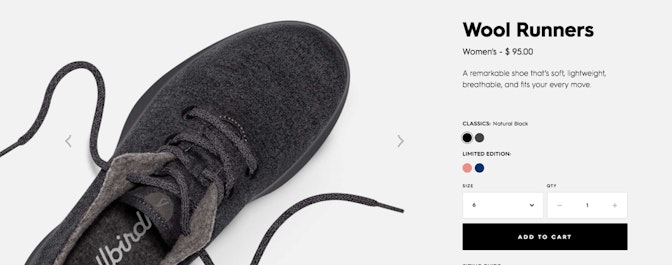Personal branding revolves around how you present yourself. If you want to be acknowledged as an expert or become an influencer in your niche, effective self-branding is a crucial step. This article offers 10 actionable tips for creating your own personal brand, along with personal branding examples for inspiration.



What is personal branding?
Personal branding is the strategy of creating a brand around a person rather than a business entity. It’s commonly used to advance people’s careers by positioning them as an expert within a specific industry. By developing a strong personal brand, you can expand your social following, enhance your job prospects, and create more opportunities in your career.
Building a personal brand doesn’t happen overnight. It requires thorough planning and several months of dedicated effort before you start to see results, and sometimes, even after receiving feedback, you may need to refine your brand. This form of branding is also known as “self-branding,” a term which is used interchangeably with “personal branding” throughout this article.
→ Click Here to Launch Your Online Business with Shopify
Why is personal branding important?
Personal branding is important because it helps give a person more credibility. It’s never been more competitive to land a new job or earn a paycheck. With more people competing for the same positions, you need to differentiate yourself in order to get noticed.
Personal branding can help recruiters find experts like you with ease, especially if you’ve been working on it for a while. If you’re trying to land a higher position at a new company, you can showcase key data such as the number of followers you have, how much traffic your website gets, or other vital metrics that can give you a competitive advantage over other candidates.
Think of it almost like an online portfolio about yourself. Branding yourself allows more people to get to know who you are and how you bring value.
How to build your own personal brand: 9 tips
1. Be authentic
When it comes to self-branding, being authentic is essential. But what does that mean? It means be yourself. Everyone has their own quirks. Maybe you randomly burst into song in the middle of a conversation. Or maybe you have a unique way of dressing. There’s something about you that makes you an original. And if you’re serious about branding yourself, now’s the time to come to terms with your true self.
Example: Gary Vaynerchuk
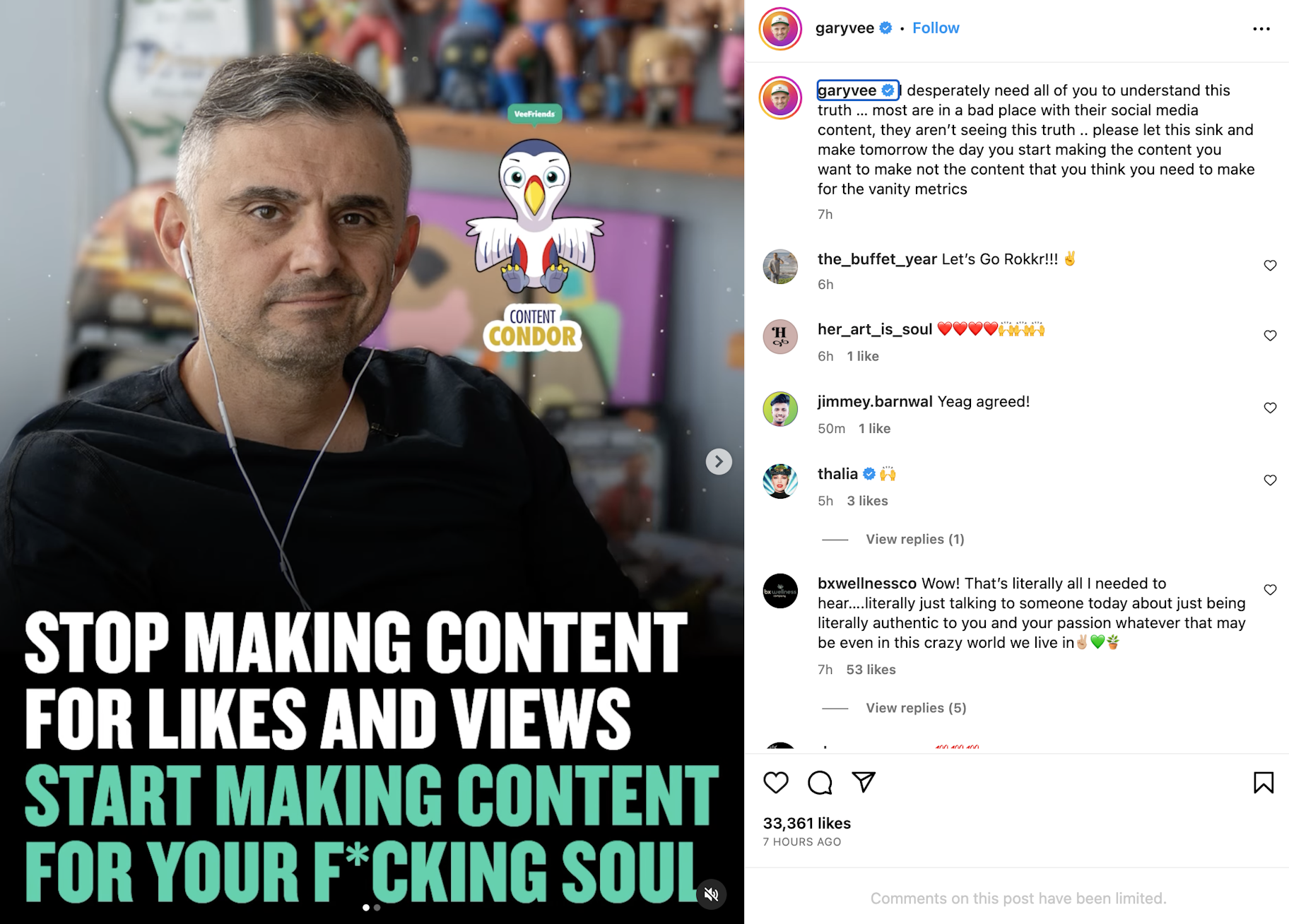
One of the best examples of real personal branding is Gary Vaynerchuk. He is a famous business expert who is known for being himself. Many people say he is just as authentic in person as he is online.
The most noticeable thing about him is that he doesn’t censor himself. In fact, he’s likely to turn down a speaking gig that asks him to tone down the swearing than he is to actually tone it down. But that’s what we love about him.
He talks to you the way you talk to your friends. He doesn’t walk around in an expensive suit reminding you that he’s more successful than you (even though he is). He’s a down to earth kind of guy. Overall, his genuine approach makes his brand very successful.
2. Start blogging
Blogging for personal branding is a strategy utilized by many top influencers. Why is it effective? Well, today, you might be an unknown entity without a strong voice. However, if you consistently create content within your niche for at least one to two years, you’ll eventually build an audience around yourself.
There are two ways to approach blogging for personal branding: You can establish your own blog. This personal branding strategy will require significant upfront work, but it will ultimately prove most rewarding. Alternatively, you can write guest posts for prominent blogs within your niche. This allows you to build an audience more rapidly, though you won’t own any of the virtual properties.
Example: Tanesha Awasthi
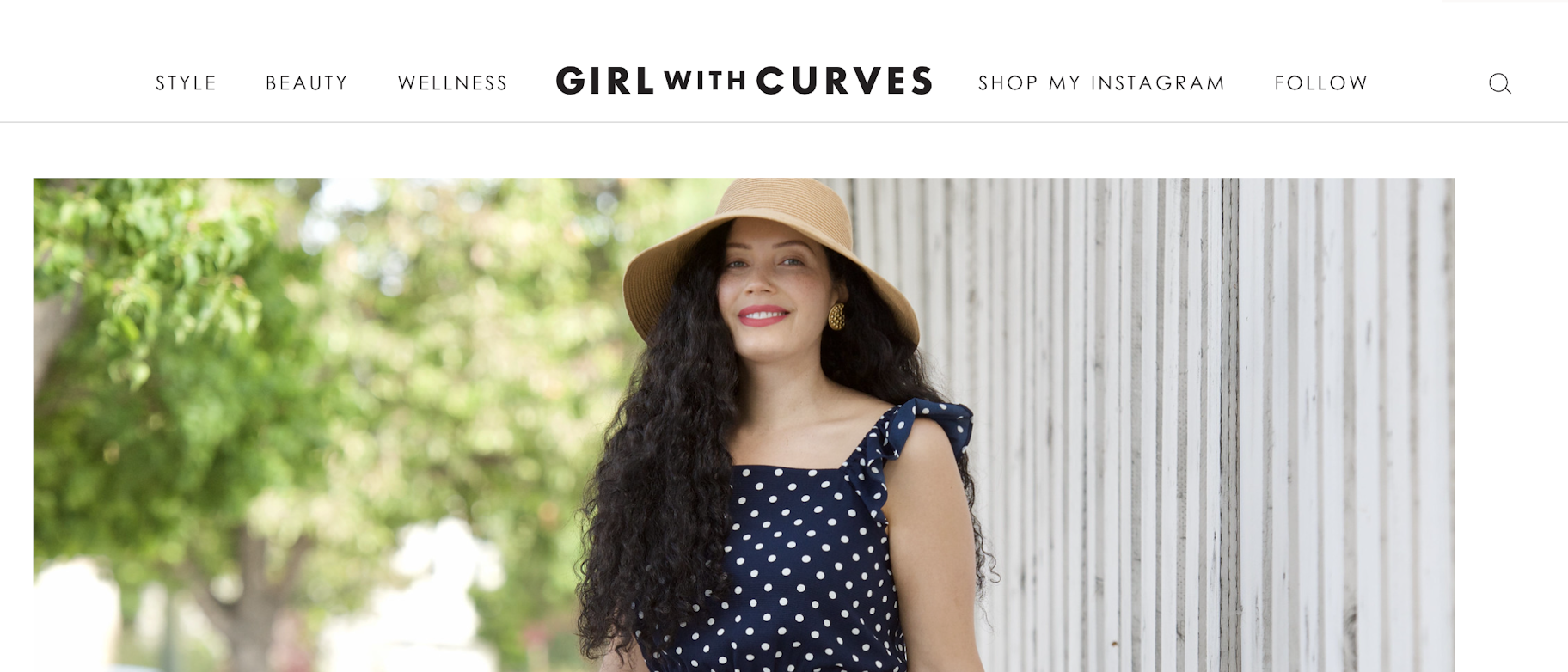
Tanesha Awasthi created her personal brand through her blog, Girl With Curves. She promotes body positivity and conveys the idea that “style has no size.” Today, she stands as an influencer with 469,000 Instagram followers, a testament to her growing popularity.
Awasthi’s journey offers a valuable lesson: regular blogging can dramatically enhance personal branding. To replicate Awasthi’s success, begin blogging about a subject you’re passionate about. Maintain consistent output and offer unique insights. As your audience expands, you can generate revenue from your blog using affiliate links and sponsored content.
3. Provide Value
Say you’re selling makeup products. You could either be the brand that solely runs ads, or you could build a personal brand where you create makeup tutorial videos, write articles about common makeup questions, and host a stream of makeup inspiration ideas for different seasons or events.
While a customer could very well buy from a brand that solely runs ads, they’ll be more likely to buy from an ad run by an influencer who provides value. Why? Because that influencer helped them and taught them something new even before they were ready to buy. That brand is top of mind.
Example: Mimi Ikonn
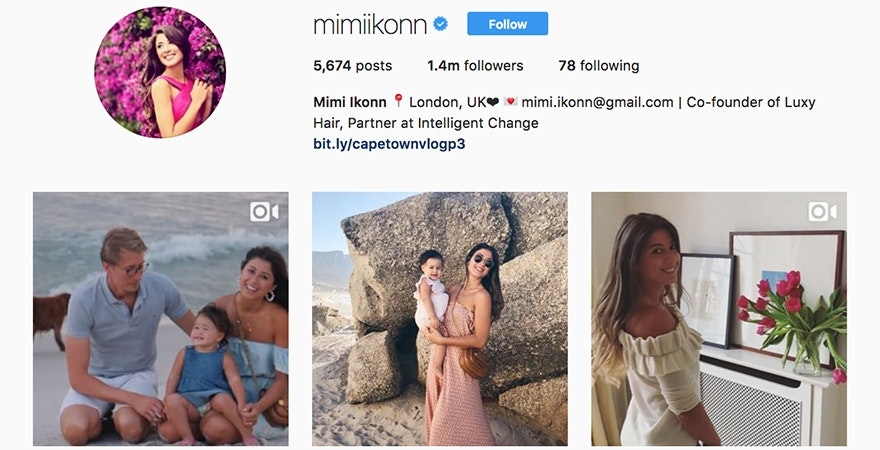
Mimi Ikonn’s personal branding strategy is all about providing value. She rose to fame with a YouTube channel for her Luxy Hair brand. In her videos, she creates hair tutorials people can follow along with. She subtly shows her hair extensions in her videos without making them the focus of it.
Occasionally, she creates videos about hair extensions, but even then the focus centers on value-based content like how to pick the right color and how to clip extensions in. It’s unsurprising that she’s built a following of nearly two million subscribers across her social media accounts. Now that’s how you build a successful personal brand.
4. Be consistent
Consistency is the secret sauce that unites all successful personal brands. Consistency isn’t just about posting on social media every day; it also pertains to unifying the brand’s look and messaging. Do all your social media posts look different, or do they maintain a consistent aesthetic? While some may argue that content variety is key, the truth is that consistency can make it easier to cultivate and grow a following.
Consider a renowned Italian chef. If they suddenly shifted to cooking only Japanese cuisine, their loyal followers might feel disillusioned. After all, they initially fell in love with the chef's Italian recipes. The same principle applies to personal branding. Your audience grows to appreciate the unique way you present your content. An abrupt, drastic shift can leave them feeling disconnected, potentially causing them to look elsewhere.
Example: Manny Gutierrez
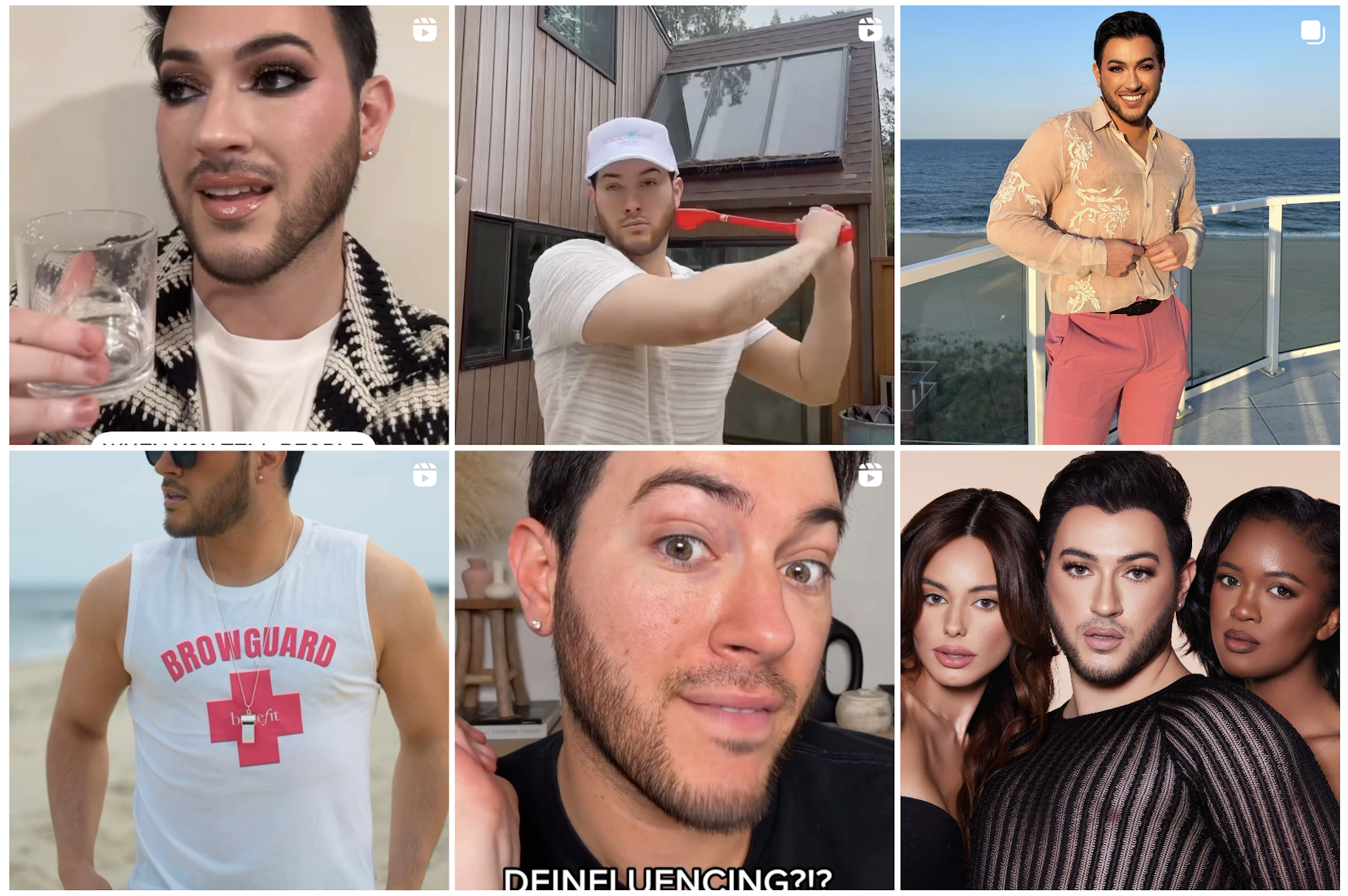
Manny Gutierrez’s personal branding is remarkably consistent. As a beauty influencer, he frequently posts makeup tutorials on his YouTube channel. If you visit his Instagram account, you’ll find that most of the pictures feature up-close looks at his makeup. Notably, the majority of his makeup styles are more dramatic, boasting vibrant colors for that extra pop. As a result, makeup enthusiasts seeking a more dramatic look would likely follow his Instagram account and subscribe to his YouTube channel to explore similar styles.
Gutierrez also runs an online store called Manny Mua, which allows him to better monetize his YouTube channel. You’ll notice that a few t-shirts and a PopSocket bear some vulgar words. This is likely because he often uses explicit language in his YouTube videos, and his product line maintains a consistency of his communication style.
5. Network, network, network
It’s hard to achieve successful personal branding if you never put yourself out there. Start that blog, attend that Meetup event, mingle with people at conferences, have that cup of coffee with a stranger, post on social media every day. The more you interact with people, the larger your network becomes.
While you may be tempted to stick to a niche-focused network, the wisest approach is to expand into other areas. You never know when you’ll encounter someone who offers a different perspective or whose expertise lies in an area that you might need to learn more about in the future.
Example: Doug the Pug
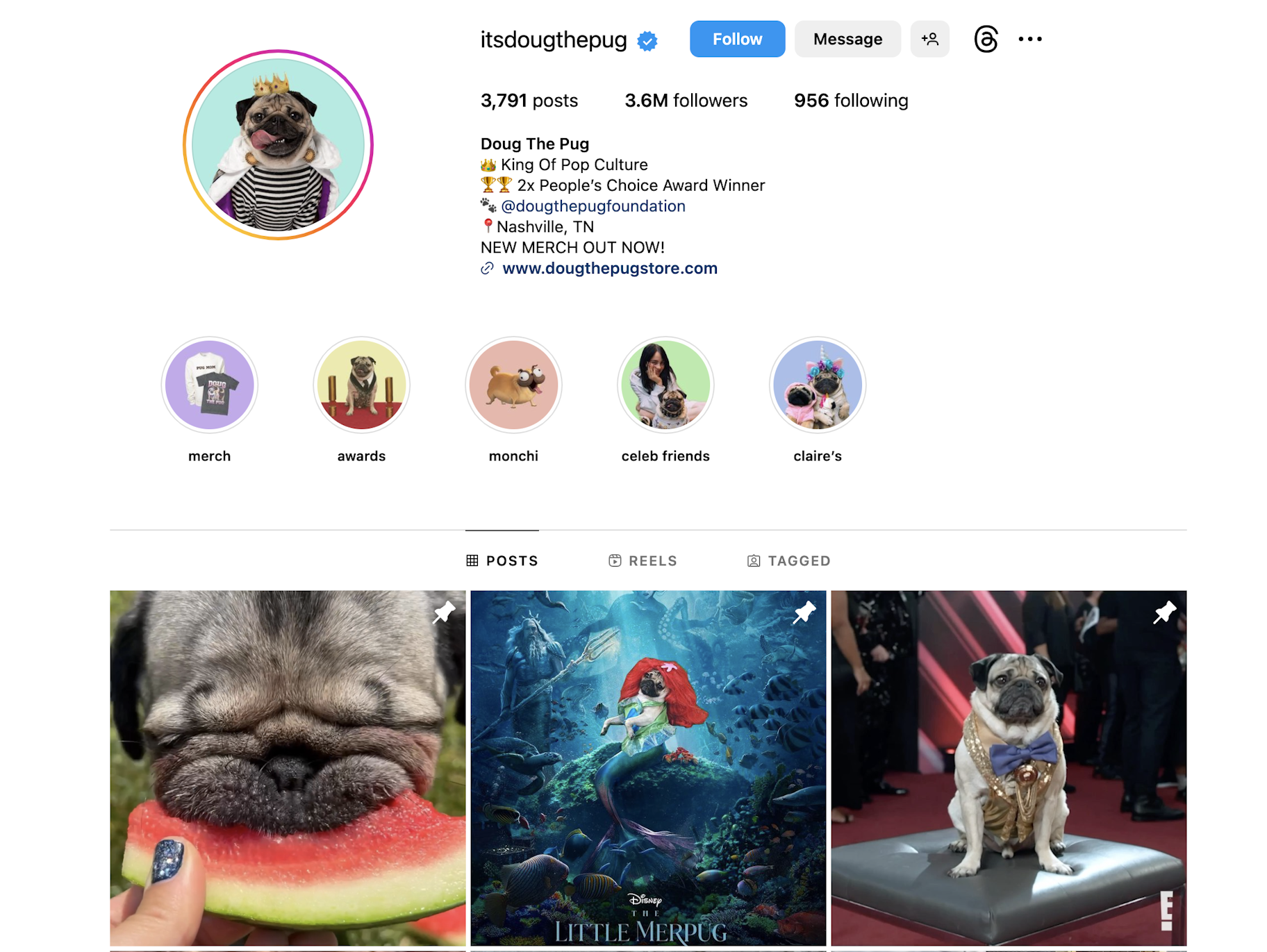
It might seem unusual to add an adorable pug to this list, but when you have 3.6 million followers on Instagram and 2.5 million followers on Twitter, it’s safe to say you’ve mastered personal branding, or as Doug the Pug would say, become the “King of Pop Culture.”
Doug the Pug is one of the most networked dogs in the world. He regularly attends dog events, media interviews, concerts, and more. When his social media posts aren’t featuring him surrounded by pizza, they often include photos with other influencers.
Why is this effective? Because those influencers then share the picture on their own social media platforms, tagging him, which helps to boost his social following. By growing his followers, he can sell more products through his Doug the Pug Store. So when you’re hanging out with other influencers, consider snapping a quick photo and posting it on social media. It could help to strengthen your personal brand
6. Become a creator
Some people build a personal brand by being controversial, but this can sometimes backfire and result in a lot of negative publicity. A safer way to establish a strong personal brand is to become a creator. Whether you develop your own online store, build a unique product, or produce original content, never underestimate the power of creation.
The most influential figures are creators and doers. Hiding behind your computer and spending your weekends watching Netflix isn’t going to advance your personal brand. Taking action and creating meaningful content consistently will elevate your status as a creator.
Example: Carli Bybel
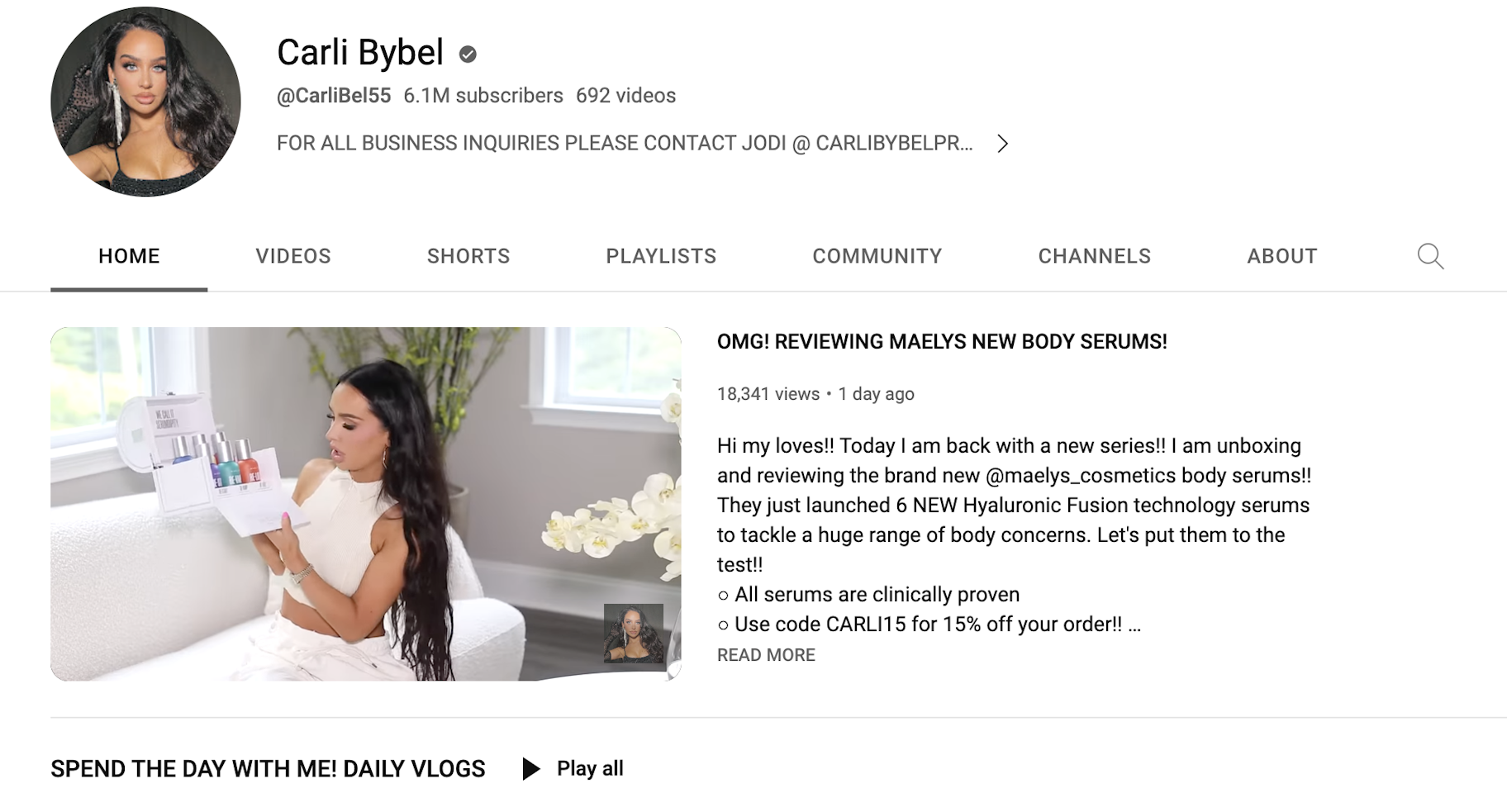
Carli Bybel’s personal branding story started on YouTube, where she consistently creates beautiful makeup looks. To better monetize her influence, she also developed a makeup kit, which she often showcases on her channel. While she doesn’t have her own beauty store, she does sell her product on the popular BH Cosmetics website.
This product is so popular that customers are restricted from ordering more than four units at a time, a restriction that underscores how building the right personal brand can help drive strong sales growth. Besides creating YouTube videos and her own beauty product, Bybel also launched a blog where she discusses fashion, beauty, and hair. This helped scale her reach and get more eyeballs on her personal brand.
7. Tap into your expertise
Branding yourself can be hard when you don’t have an area of expertise. Every influencer has their own niche. If you have an online store selling tools, you might want to ensure you’re an expert in carpentry, furniture design, or some relevant niche.
If you sell car parts, you should probably build up your expertise in the automotive industry to provide value. Another perspective is to build a brand around your own area of expertise. Suppose you worked at a hair salon for five years. In that case, you might build a personal brand where you share your expertise on hair issues while selling hair products.
Example: Michelle Phan
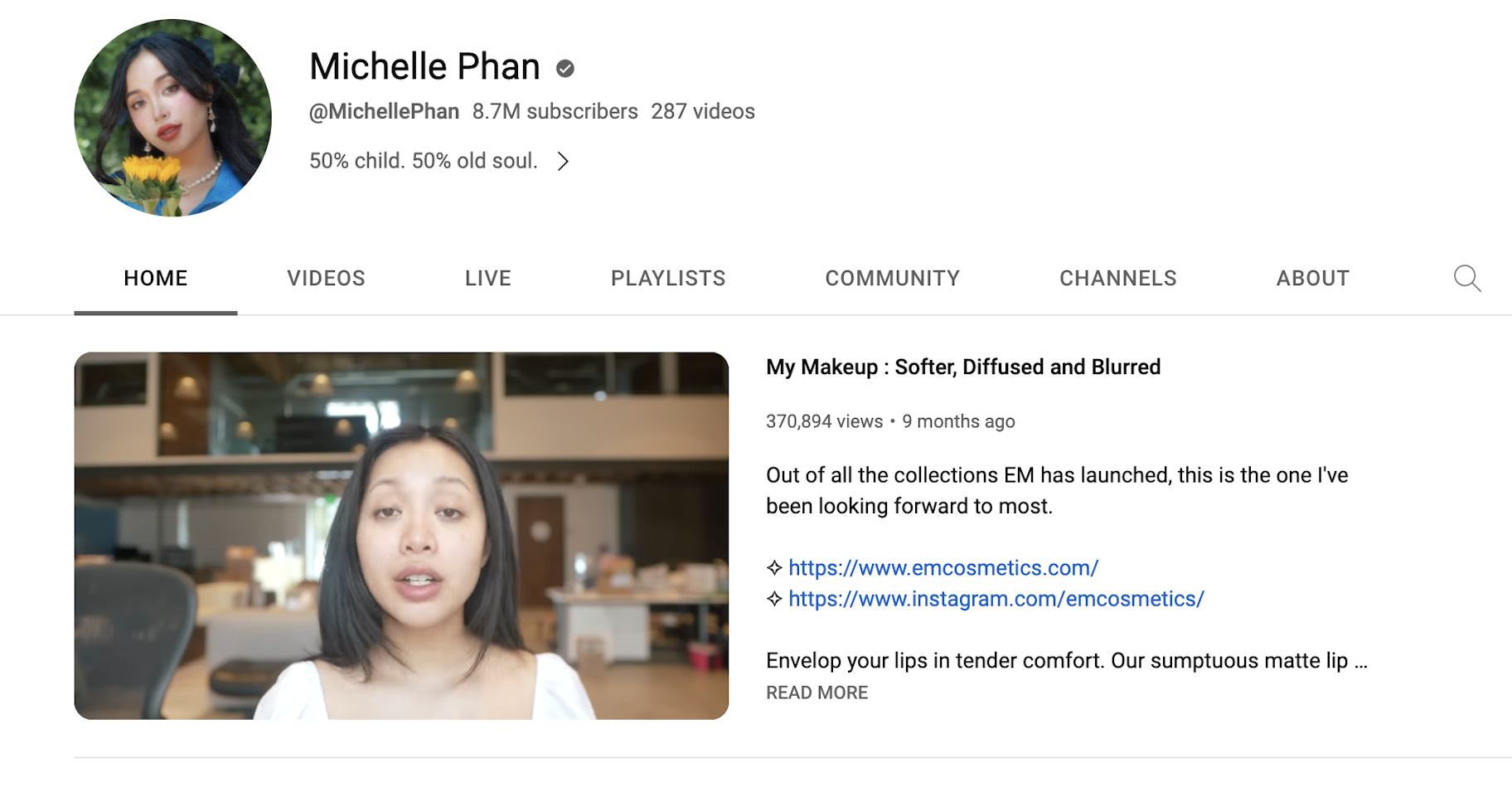
Before Michelle Phan started self-branding on YouTube, she was an art major at an arts school. She applied her degree to makeup artistry and quickly built up a loyal following on YouTube, where she hosted makeup tutorials.
Eventually, she shifted her focus from creating YouTube videos to building her brands. She co-founded and created two brands: Ipsy and EM Cosmetics. Given her experience with makeup tutorials, moving into creating makeup brands was a logical step in her career.
8. Amplify Yourself
Earlier in this article, we talked about being authentic. Amplifying yourself is the second step. In a crowded world, it can be hard to stand out. Amplifying yourself is where you take the essence of who you are and run wild with it.
For example, say you’re a risk taker. If you want to build a personal brand around your love for taking risks, you might create content featuring you engaging in various daredevil activities. This is kind of like how Nik Wallenda tightroped across Niagara Falls or Felix Baumgartner did a supersonic fall from the edge of space. You might not do something as extreme, but you would engage in more extreme activities than the average person would.
Example: Simeon Panda
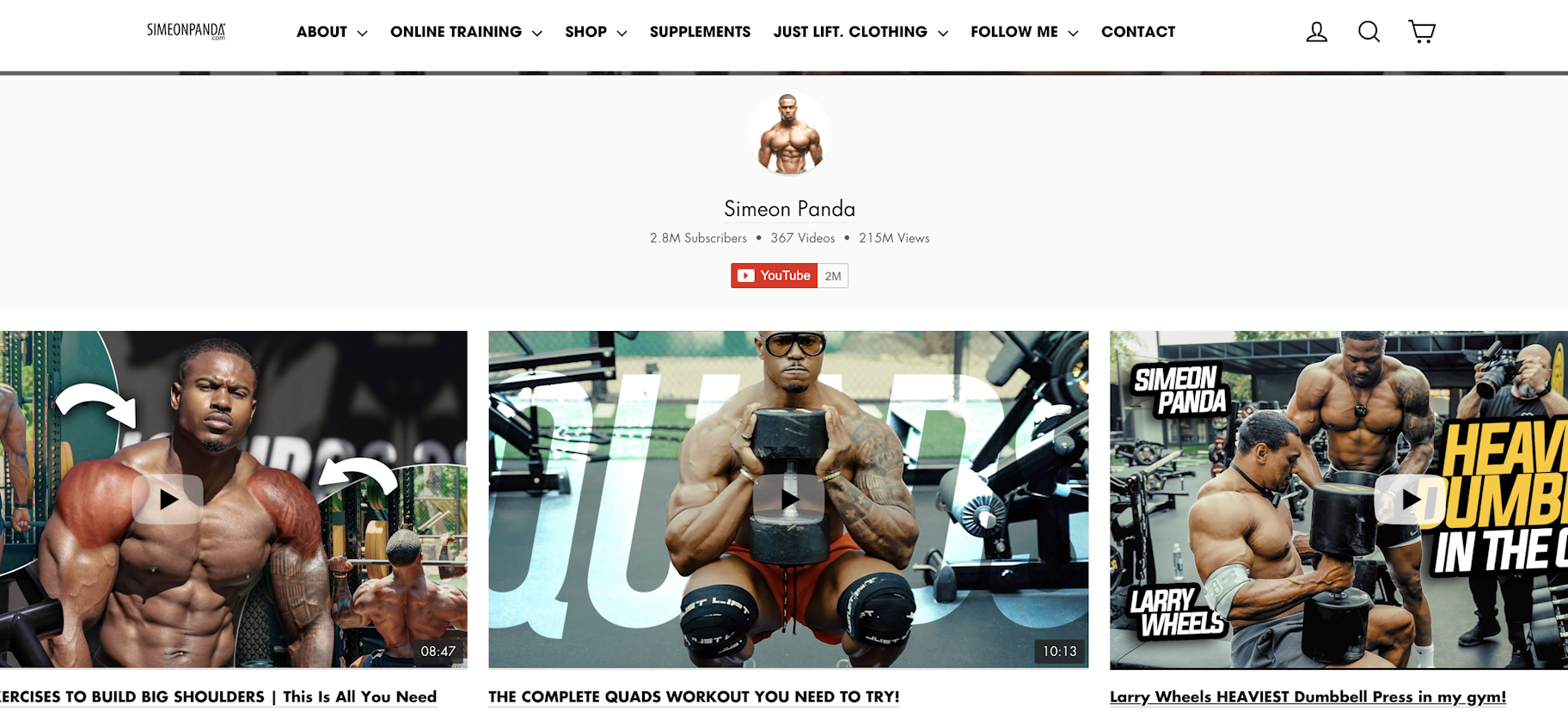
Simeon Panda has created a personal brand around his physical appearance. After all, it’s hard to be taken seriously as a fitness expert if you aren’t fit. He’s been featured on the cover of magazines for his impressive physique. It’s not just that he’s in great shape—his muscles are significantly larger compared to the average person.
Panda amplified his physical appearance to stand out in the fitness niche. On his online store, he sells online training content and fitness equipment. If he hadn’t amplified his physical appearance, his online training videos wouldn’t be as compelling. However, those who aspire to have bigger muscles and stronger bodies may choose to buy products he sells to help improve their physique.
9. Interact with your fans
Personal brands can’t be built without human interaction. Of course, many influencers eventually reach a point where they interact a little less with their fans. But if you’re just starting your self-branding journey, you’ll likely want to respond to messages from your followers. It’s simply good business.
Allocate some time each day to interact with your followers on social media. Did someone tag you in a post? Respond to it. Was one of your articles shared on social media? Thank them. Does a customer have a question about your product? Answer them. People appreciate prompt responses.
Example: Eric Bandholz
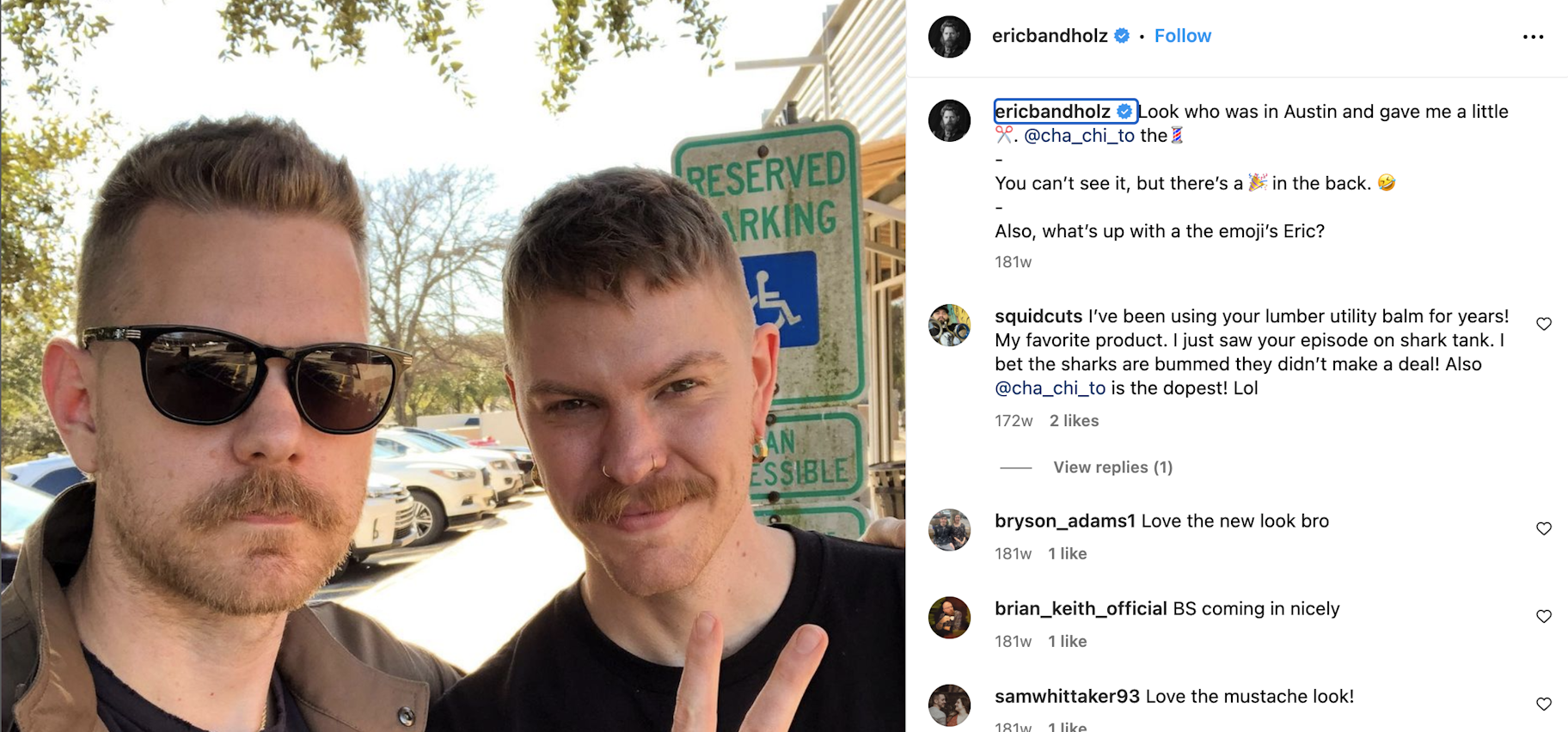
Eric Bandholz, founder of Beard Brand, actively engages with his followers on social media. While he doesn’t respond to DMs on Instagram, he does respond to public comments, despite having over 26,000 followers.
You’ll also occasionally find messages from him on his brand’s YouTube channel. It’s one of those personal brand examples that demonstrates the power of direct interaction and responsiveness in building a loyal following.
How to improve your personal brand
Once you’ve started to work on your personal branding, seeking feedback and ensuring your self-brand is aligned with your personal branding statement will help you improve on your progress.
Personal Branding has been hugely successful for many different people, but without your personal branding statement, it can be hard to know when you have achieved success in your endeavors. It’s essential to know what progress looks like to improve your personal branding.
Follow these steps to improve your personal brand:
- Research and create your personal branding statement: Define your audience at this stage and audit any competitors that may exist for you.
- Build a personal branding strategy: Plan how to engage with your target audience and define what success will look like for you in two months, nine months, two years.
- Monitor your personal brand engagement: Promote positive participation and have a plan of action for negative remarks.
- Develop your personal brand: Aim to share your personal brand through social media, networking, outreach, and speaking opportunities. Consider blogging, vlogging, podcasts, and other ways that you could promote your personal brand so your audience will consume the content quickly.
- Have a communication plan: Controlling your presence online can be time-consuming, so this plan will help you with negative backlash and to easily provide information to partners you will work with down the line.
- Measure your success regularly: Set some KPIs for personal brand success so you know you’re heading in the right direction. Celebrate even small wins to remain motivated to achieve more.
So after doing all this, how do you know if you have been successful in building a personal brand? A few valuable KPIs include:
- When a sale converts through your blog
- When you are asked to speak at an event or on a podcast
- When someone refers you to a potential client
- When a publication reaches out to invite you to guest blog
- When people start mentioning you online, on social media, on heir blog or on other important media
Personal branding mistakes to avoid
Branding yourself can be tough and time-consuming. Negative feedback can sting, and sometimes you may not feel like living up to the persona you’ve created. To streamline your self-branding journey, here are some pitfalls to steer clear of:
- Ignoring other influencers: You’re not alone in personal branding. Others have done it longer. Do your homework to avoid repeating their steps. Monitor your competitors, learn from them, and seek advice from potential partners. Avoid pointless ventures.
- Ignoring your followers: Listen to your followers, even if they’re few. If they dislike a product you promote, understand why and reconsider endorsing it. Check social media comments to know their preferences.
- Generating subpar content: Laziness can hurt your brand. Stay updated on your industry. If writing isn’t your forte, pick another medium or hire a freelancer to boost your content.
- Branding yourself wrong: Wrong branding can isolate you. If you’re reinventing a traditional industry, ensure it’s welcomed. Research thoroughly and ask tough questions before you start.
- Not being consistent: Consistency is key in self-branding. Followers trust stable belief systems. If you shift your core beliefs, your personal brand might lose trust.
- Forgetting the longer term: For a personal brand, envision the long run. If you offer beginner how-to makeup videos, decide whether you’ll escalate to advanced levels with time, or stick to beginner content. Early planning paves the way for future direction.
Time for action
Building a personal brand can elevate your business to new heights. By embracing personal branding strategies like being authentic, consistent, and social, you increase your chances of career success. While it can be daunting to put yourself out there, the reward outweighs the risk. You hold the power to make a significant impact in the world. Your legacy is in your hands.
Are you considering building a personal brand? Share your thoughts in the comments!



